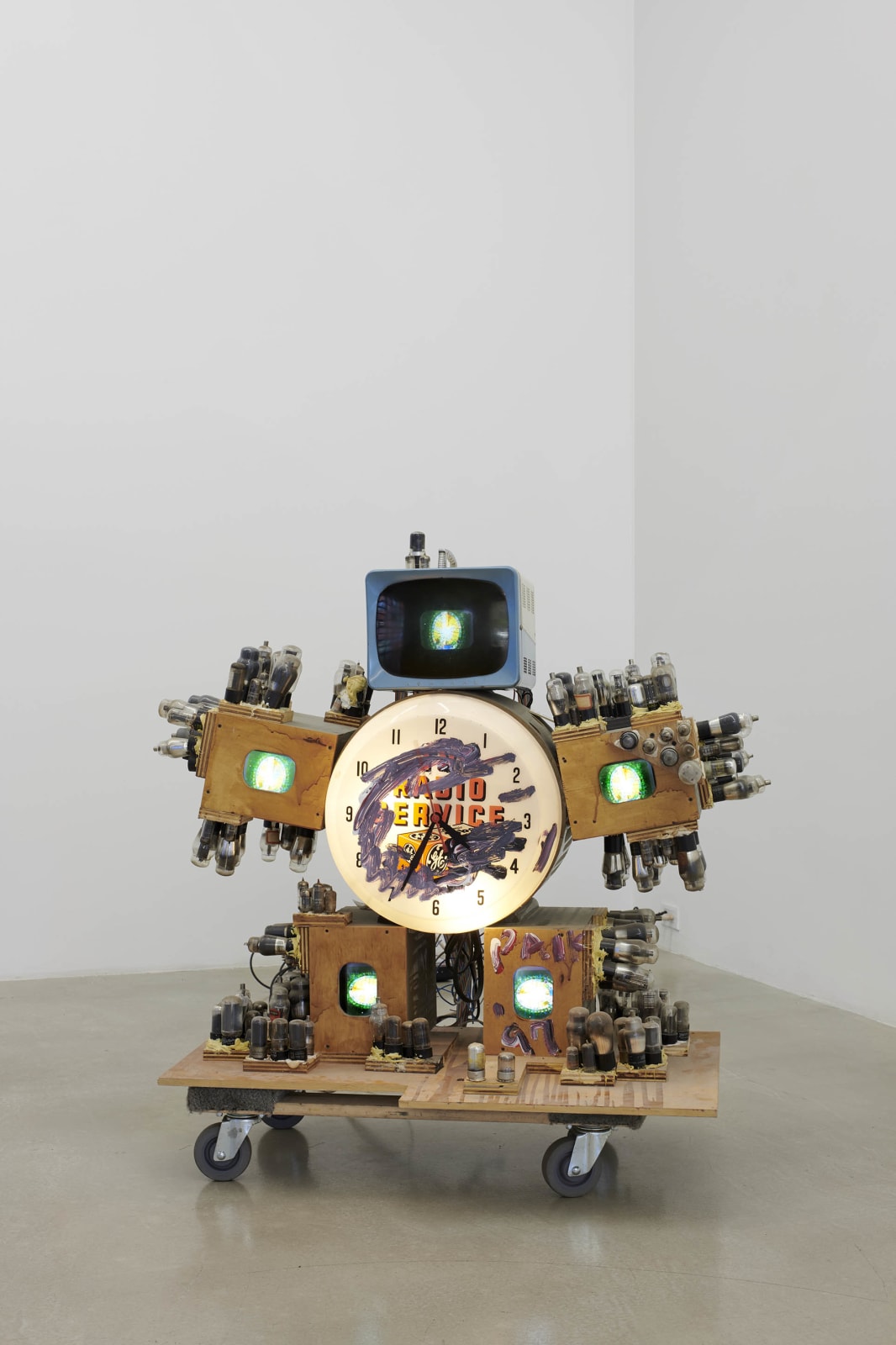



TV SERVICE ROBOT, 1997
Video, five television sets
34 1/4 x 39 3/8 x 31 1/2 in
87 x 100 x 80 cm
87 x 100 x 80 cm
Sold
Further images
The intimately scaled 'TV SERVICE ROBOT,' 1997, is a work which references both the studio environment in which Paik created his art and the pace at which technology renders itself...
The intimately scaled "TV SERVICE ROBOT," 1997, is a work which references both the studio environment in which Paik created his art and the pace at which technology renders itself obsolete. While visiting family in Tokyo in 1964, Paik made his first robot work, Robot K-456, in collaboration with the Japanese engineer and electronics expert Shuya Abe. Robot K-456 was an anthropomorphised robotic skeleton capable of moving and making noise, programmed to play a recording of John F. Kennedy’s 1961 inaugural address and periodically defecate beans. Subsequent robotic works made by Paik reveal his ongoing interest in exploring the connection between technology and the human body. The relative human scale and sense of hand-made assemblage of these sculptures create an immediate physical connection with the viewer’s own body. Although TV Service Robot takes the form of a robot, it is not animated. An impression of the robot’s ‘movement’ is instead given by the video footage playing on the TV screens that serve as the limbs and the head of the robot. These screens display heavily synthesized and colorized passages of "Merce by Merce by Paik", a two-part tribute to the groundbreaking postmodern choreographer Merce Cunningham and the avant-garde master Marcel Duchamp. In these videos, Paik and his collaborators—who include Cunningham, Charles Atlas, John Cage, Jasper Johns, and Shigeko Kubota—question art, life and time, as Paik’s electronic manipulations cause space and time to be layered and transformed. TV Service Robot’s unfinished base rests upon a dolly, as it would have at the artist’s studio on Mercer Street where these works were made. The glowing clock of the robot’s torso was salvaged from a TV repair shop in New York, and the body of the work is studded with the old radio and TV tubes which littered the studio floor. This incorporation of anachronistic electronic components and suggestion of process is in line with Paik’s tendency to shy away from overly finished work.
Installation Video: https://vimeo.com/421582969
Full Video:https://vimeo.com/361136573
Password for vimeo: 533west26th
Installation Video: https://vimeo.com/421582969
Full Video:https://vimeo.com/361136573
Password for vimeo: 533west26th




